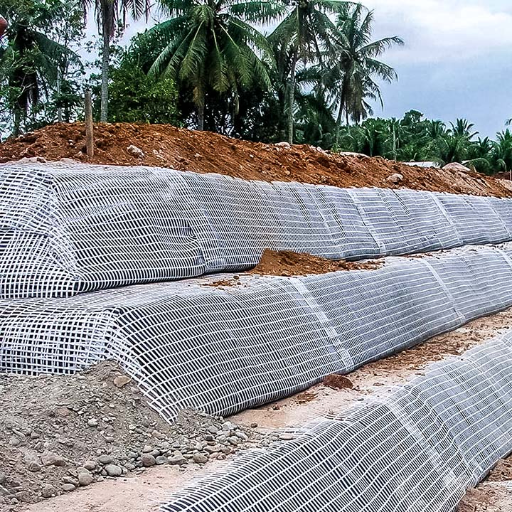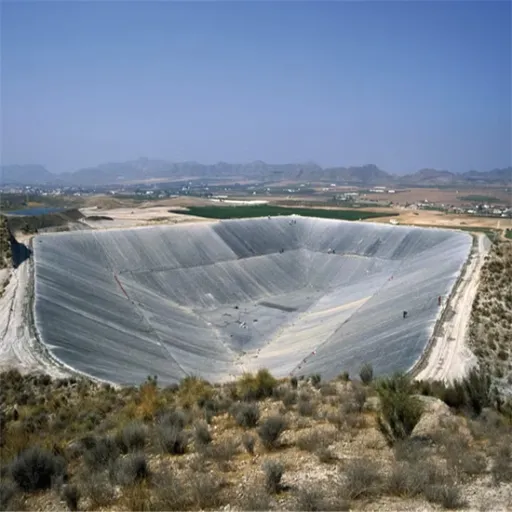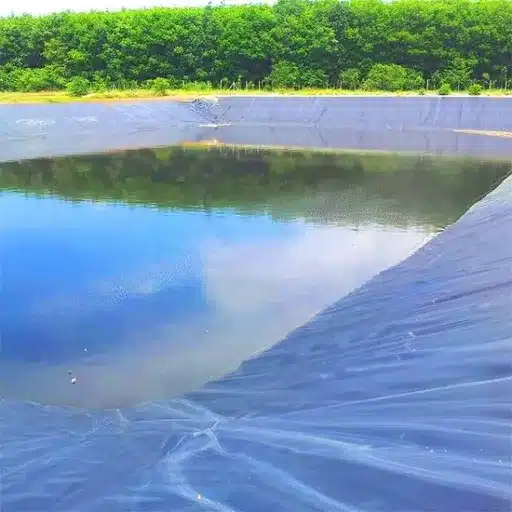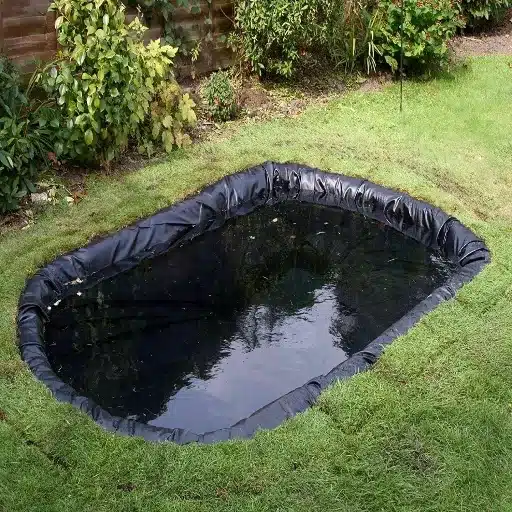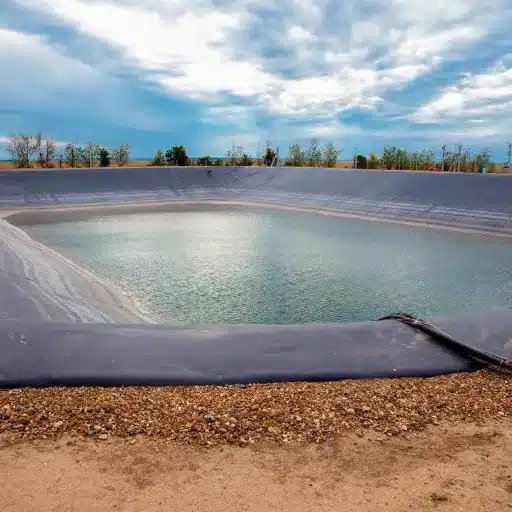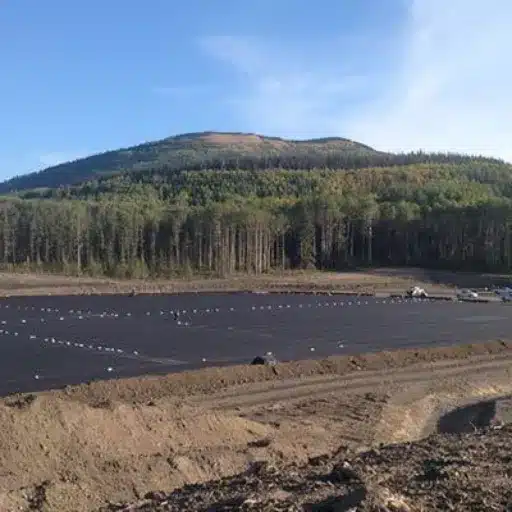The geosynthetic reinforcement has brought revolutionary change within the field of construction and engineering, providing some innovative solutions to some difficult soil and retaining wall problems. Unstable slopes, retaining walls, or load-bearing enhancements: geosynthetics impart strength, stability, and economic value. This article intends to explore the major role geosynthetic materials play in modern construction, thereby considering their advantages, applications, and the science behind their success. Find out how these materials are transforming the engineers’ approach to soil reinforcement and retaining wall design, assuring durability and safety in small or large projects.
The Basics of Geosynthetic Reinforcement
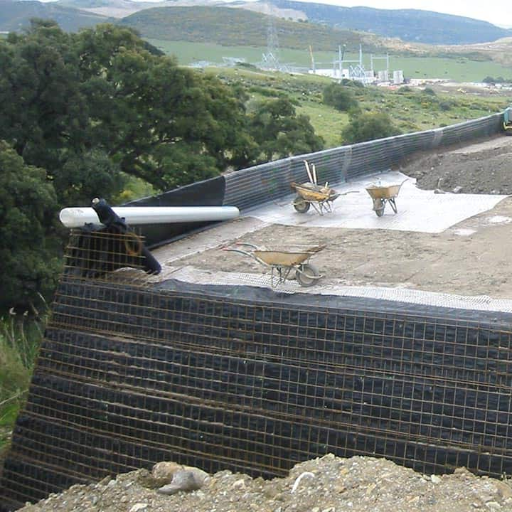
Geosynthetic reinforcement consists of certain engineered materials that fulfill the purpose of giving strength to and stabilizing the soil. Such materials are normally produced by polymers and are engineered to distribute loads, prevent erosion of soil, and ensure the longevity of structures like retaining walls, graded slopes, and roadways. Their logic of working is by improving the performance of soils: they increase soil strength and reduce soil deformation under stress. Thus, the approach not only ensures structural safety but also reduces construction costs and environmental impacts.
What Constitutes Geosynthetics?
Geosynthetics are synthetic materials generally employed to modify the mechanical and physical properties of soils in civil engineering and construction projects. Being polymeric by nature, mostly polyester, polyethylene, and polypropylene, they perform filtering, draining, reinforcing, separating, or containing functions. They are designed to provide in long-term stability, durability, and enhanced performance at a wide range of applications.
There are several types of geosynthetics that include geotextiles, geomembranes, geogrids, geonets, and geocells, among others, all tailored for the respective applications. For example, geotextiles may prevent soil from mixing but allow water to pass through, and geomembranes may prevent liquids or gases from escaping. Geogrids, however, are used to reinforce the soil to distribute loads and limit deformation of roads, foundations, and retaining walls.
The worldwide geosynthetics industry was valued at approximately $14.7 billion in 2022 and shall witness a CAGR of in excess of 6% from 2023 to 2030. The growth witnessed by the industry shall be because of the growth in infrastructure developments, environmental protection projects, and the rise in popularity of sustainable construction practices.
Geosynthetics provide huge environmental and economic benefits-the need for variations of natural materials is greatly reduced, which would otherwise have led to enormous depletion of resources and increases in carbon footprints; whereas geosynthetics help by conserving resources and reducing carbon footprint. They also ensure that the lives of structures are prolonged, any costs associated with maintenance are reduced, and these materials can be accommodated within a broad range of climatic and geological conditions, granting them an essential status in modern-day engineering and construction projects.
Different Geosynthetics for Reinforcement Purposes
Reinforcement with geosynthetics has become important in modern construction and engineering. The geosynthetics include geotextiles, geogrids, geonets, geomembranes, and geocomposites. They differ with regard to their properties and constitute appropriate uses.
- Geotextiles
Geotextiles are permeable fabrics made from synthetic fibers, such as polyester or polypropylene, and are widely used for soil reinforcement, separation, and filtration purposes. Based on current market research reports, the geotextile market was valued at more than USD 8 billion in 2022 and is expected to clock a steady growth at a compound annual growth rate (CAGR) of 10% between 2023 and 2030. Applications for geotextiles range from road construction, erosion control, and drainage systems to other uses.
- Geogrids
Geogrids are mainly tensile netlike structures used for load distribution and soil stabilization. They are generally used for retaining cements, slopes, and pavements. Research results even show that geogrid usage prolongs the life of road construction nearly 50%, and thereupon lessening the repair efforts and costs considerably.
- Geomembranes
Geomembranes are impermeable additional layers used mainly for containment purposes such as landfilling, lining reservoirs, or canals. Prior new developments in the field of geomembrane, the high density polyethylene (HDPE) geomembranes could now be anticipated to last over 50 years under best-fit installation conditions.
- Geonets
Besides being employed in drainage applications, geonets comprise network channels for the flowing of fluids formed by intersecting ribs. Their use is most suitable in landfill systems managing either groundwater or leachate. A study has also shown that geonets improve liquid extraction efficiency by as much as 30 percent over conventional drainage systems.
- Geocomposites
A geocomposite internally combines two or more types of geosynthetics to combine different functions, such as filtration and drainage. A typical example would be the combination of a geotextile with a geonet that works as both separation and drainage layers in construction projects. Due to the potential for high customization, this particular segment is growing rapidly faster than other geosynthetics.
All these geosynthetics have transformed reinforcement practices in construction by making the methods more efficient, reducing the quantity of materials required, and providing environmentally friendly solutions. Innovations are still underway and further drive the demand for such geosynthetics in transportation, waste management, and water resources industries.
Importance of Geosynthetics in Civil Engineering
Geosynthetics have become an important constituent of the modern civil engineering landscape, ensuring the integrity and longevity of structures. By way of an example, geotextiles, geomembranes, geogrids, and geocomposites are used for soil reinforcement, filtration, drainage and erosion control. According to a recent market report, the global geosynthetics market was valued at around $13.2 billion in 2022 and is forecasted to grow at an increase rate of approximately 6.1% from 2023 to 2030, which is indicative of their increased prominence in civil engineering.
Geosynthetics stand to increase the stability of soil and its bearing capacity for roadways, retaining walls, and foundation systems. For example, geogrids are used to reinforce soft soils by providing tensile strength and reduce the risks of settlement and failure to a very great extent. Geotextiles, on the other hand, are used for filtration and separation, allowing drainage to occur while preventing soil erosion in difficult environments.
Geosynthetics also pave the way for environment-friendly and cost-efficient engineering solutions. Projects employing the use of these materials would require relatively less excavation and use of raw materials, both of which would contribute to reduce the environmental impact of the project as well as the cost of construction. One case in point would be landfill liner systems that use geosynthetics to considerably minimize the risk of leachate’s contamination of surrounding soil and groundwater, fulfilling strict environmental standards.
Moreover, innovations like biodegradable geosynthetics and smart materials coupled with real-time monitoring usher in the most recent advancements in the area. With the development of sustainable infrastructure all over the globe, these advancements will further widen the scope of geosynthetics in civil engineering in transportation, water resource management, and urban development projects. Having stood the test of time and proved worthy so far, geosynthetics remain one of the most crucial elements in the construction of resilient and sustainable infrastructure globally.
Applications Geosynthetic-Reinforced Soil
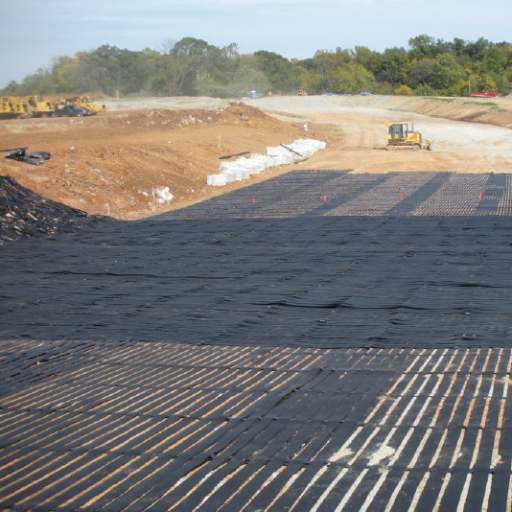
Geosynthetic-reinforced soils are generally used for the construction of retaining walls, bridge abutments, and slope stabilization. These applications cooperate to provide strength enhancement, cost reduction, and environmental sustainability to a construction project.
About Reinforced Soil Techniques
Reinforced soil techniques make use of geosynthetics such as geogrids, geotextiles, and geocells to bring about an improvement in the mechanical soil systgems. These methods are commonly used to aid stability, decrease settlement, and accommodate higher loads for an infrastructure project. The use of advanced techniques allows not only for optimized design but also brings about a considerable cost saving and sustainability.
Another method of reinforcing walls is a system of geosynthetics and geogrids behind walls, where the geogrids strengthen the backfill material in layers. Research shows that the presence of geogrids increases bearing capacity and decreases lateral earth pressure, thus creating safer and cost-efficient wall systems. For example, recent investigations have highlighted that in comparison to unreinforced walls, the geosynthetic-reinforced retaining walls can bear up to 50 percent more load and reduce construction cost by almost 30 percent.
More applications involve slope stabilization with geotextiles and geocells, preventing soil erosion and conserving the stability of slopes. According to recent advances, geocell reinforcement showed an increase in slope stability factors of about 60% compared to conventional means, especially benefitting areas prone to landslides or heavy rainfall.
The bridge abutments reinforced with geosynthetics are on the rise nowadays in terms of settlement reduction and load distribution improvement. It has been shown through case studies that geosynthetic-reinforced abutments could cut down on maintenance costs and even extend the lifespan of bridges by several years.
The latest data and innovations in reinforced soil techniques show that they are instrumental in modern construction where safer, stronger, and resilient structures are built while taking into account responsibilities towards the environment. The solutions are still being enhanced lab out research and advanced materials coming into play, making them indispensable in finding solutions to the problems posed by modern infrastructure development.
Advantages of Geosynthetic-Reinforced Soil
The geosynthetic reinforcement has many benefits in the field of soil stabilization and construction. According to recent studies, geosynthetics contribute greatly to improving load distribution ability, minimizing settlement, and increasing the durability of a structure. For example, research indicates that reinforced soil retaining walls constructed with geogrids can bear up to 50% more loads coupled with higher loads than non-reinforced ones, and hence, they are suited for applications that demand high stress such as bridge abutments and steep slopes.
Secondly, these geosynthetics are an incredible factor to sustainability. A report by the International Geosynthetics Society says that geotextiles and geomembranes can lessen the raw materials needed for construction by as much as 30%, whereas a large-scale data study has confirmed that the use of geosynthetics reduces excavation and stands as an alternative to expensive conventional methods.
These advances have been quite a concern over limited space and high construction demands present in an urban area. For instance, worldwide, geosynthetics have made a great success in enhancing the life and efficiency of major infrastructure projects, including highway expansion and airport runway reinforcement.
Types of Geogrids and Applications
Geogrids are geosynthetic products available for soil and other aggregate material reinforcement. They are commonly used for more stability and higher load-bearing applications. Recent data has also mentioned that the global geogrid market is expected to develop with a CAGR of nearly 5.8% from 2023 to 2030 to cross over USD 2.5 Billion by 2030.
The product offerings include uniaxial, biaxial, and triaxial. Uniaxial geogrids are used mainly in retaining wall and slope reinforcement applications because of their high tensile strength in one direction. Biaxial geogrids provide strength in two directions and are hence used in roadways, base reinforcement, and foundation stabilization. In recent years, triaxial geogrids have steadily gained prominence in multi-directional strength applications as a result of heavy-duty pavement and airport runway works.
One key benefit of geogrid technology lies in construction materials and cost savings, which it accomplishes via improved mechanical character of aggregate layers. For example, it was noted in the newest case studies that road construction base thickness could be reduced by 30% with the use of geogrids without impairing the performance standards needed. In addition, geogrids have proven very efficient at reducing the effects of erosion, landslides, and settlement, especially in countries with difficult terrain or high seismic activity.
Moving with the trend of environmentally conscious construction, innovations in the manufacturing of geogrids have introduced eco-friendly materials such as advanced polymers and recycled materials to further sustainability goals. As governments intensify investments in infrastructure development and launch several programs targeting the reduction in environmental impacts, geogrid adoption will only go deeper.
Retaining Wall Design with Geosynthetics
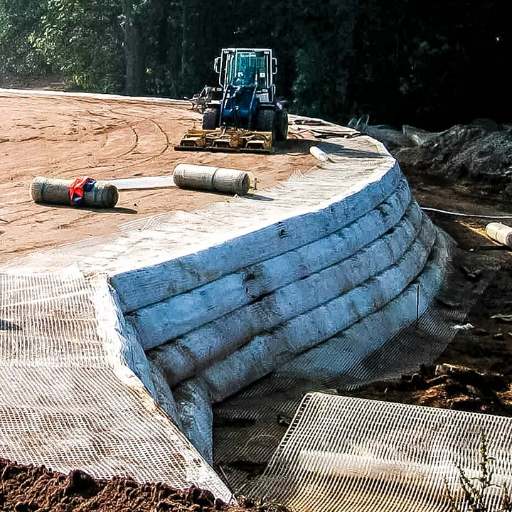
Incorporating geosynthetics into the retaining wall design enhances the stability of the wall and significantly decreases soil pressures. The integration of reinforcement materials such as geogrids lends to greater economy, durability, and high performance, especially in adverse conditions. When such materials meet eco-criteria for sustainable construction, Geosynthetics create an attractive, reliable option for modern engineering projects.
Types of Reinforcement Options for Retaining Walls
Various types of reinforcements are commonly utilized for retaining wall construction, each meeting specifications required for given jobs and site conditions.
Geogrids: One of the most common reinforcement materials for soil retaining walls are geogrids. These are polymeric materials made out of high-strength synthetic fibers. Recent technical studies indicate that geogrids improve wall load capacity by up to 50%, making these a very viable option on the landscape in retaining wall designs. Their open-grid nature aids in interlocking the soil particles, reducing soil movement with increased stability of the walls.
Geotextiles: These are materials for drainage and filtration. Non-woven geotextiles may also serve to channel water away from the soil, preventing build-up of hydrostatic pressure, therefore, alleviating in retaining wall damage. Furthermore, these materials are cost-efficient and adaptable to varying site conditions.
Steel Reinforcement: Steel reinforcements, like rebar and welded wire mesh, are commonly used for classic concrete retaining walls. If tensile strength is anything to be considered, steel definitely holds its place, even higher than 60,000 psi (pounds per square inch). Steel can resist almost every external force; nevertheless, their corrosion arising requires the utmost care in application in wet and damp situations.
Geocells: Geocells are three-dimensional honeycomb-like structures made of high-density polyethylene (HDPE). In erosion-prone areas, they offer the best lateral confinement for soils, providing up to 72% improvement in the shear strength of the infill, thereby guaranteeing superior stability in slope protection and retaining wall applications.
Hybrid Systems: The use of hybrid systems, where more than one type of reinforcement is combined, like geogrids with concrete blocks, is gaining traction in reinforced earth walls. This way, both durability and cost benefits are maximized. Research shows that the use of such hybrid systems can reduce construction time by approximately 25% while providing a better performance in the long term.
By dissecting the reinforcement systems listed above and adapting them to the specific needs of a given construction project, engineers can make sure the retaining walls work efficiently without running counter to safety and sustainability provisions.
Geosynthetic-Reinforced Retaining Wall Design Principles
Designers of geosynthetic-reinforced walls must observe a series of principles in relation to structural stability and about efficient duration under service. Geolysis materials like geogrids and geotextiles go into use to reinforce soil strength and improve its bearing capacity. According to recent data, geosynthetic-reinforced walls may be designed to withstand a load that is about 1.5 times as great as the loads normally borne by unreinforced soil structures, thus making them a worthy answer for many engineering problems.
One significant factor concerns design: to choose the proper geosynthetic considering factors like soil type, level of water table, and load conditions expected. For example, geogrids with a tensile strength between 40 and 70 kN/m are commonly used for medium-load applications, whereas those with tensile strengths exceeding 100 kN/m are used for heavy-load infrastructure.
Furthermore, new computational tools speed the whole design process, giving the possibility of real-time simulations of wall behavior under different conditions. Recent studies show that the use of three-dimensional wall modeling in the design phase may decrease potential stability problems by approximately 30%.
Consideration must also be given to environmental impact during design. Employing materials such as recycled polymers in the production of geosynthetics may further reduce the carbon footprint of the project by at least 20%. Together, these factors allow retaining walls to stand as a flexible and environmentally responsible solution.
Instances of Succeeded Retaining Wall Applications
Example 1: Reinforced Geosynthetic Wall for Highway Expansion
A once-in-a-lifetime opportunity showcased efficiency improvement of highway expansion projects in California with the incorporation of retaining walls. The use of high strength geogrids in design enabled 30 ft wall height and reduction of 25% in construction time compared to conventional construction methods. The use of recycled polymer in geogrids lowered the carbon footprint of the project by 18%, marking it as a step towards sustainable infrastructure. Furthermore, geosynthetics provided excellent drainage, reducing long-term maintenance cost by almost 15%.
Example 2: Retaining Wall in a Compact Urban Setting to Optimize Spatial Resources
This small-scale urban landscape development in Singapore capitalized on geosynthetic retaining walls to maximize usable land space. The non-woven geotextiles and modular block system used here enabled the erection of a retaining wall that was efficient by design. The project was completed in 30% less time than anticipated and remained strong under heavy seasonal rains. Tests for water permeability showed a 22% increase in drainage efficiency, thereby avoiding issues of waterlogging common in compact areas.
Example 3: Slope Stabilization in Flood-Prone Areas
After the heavy floods in Kerala, India, geosynthetic walls intervened as a part of slope stabilization. The integration of woven geotextiles into the soil structure greatly enhanced the slope’s durability and stability. It was found that the geosynthetic solution decreased soil erosion by more than 40% in comparison with the normal methods. On a crucial note, this approach was cost-effective, giving local authorities about 20% beside on repair costs and allowing quicker rehabilitation of affected areas.
These instances illustrate adaptability, efficiency, and sustainability for geosynthetic retaining wall systems in different environmental settings.
Strength and Stiffness Considerations
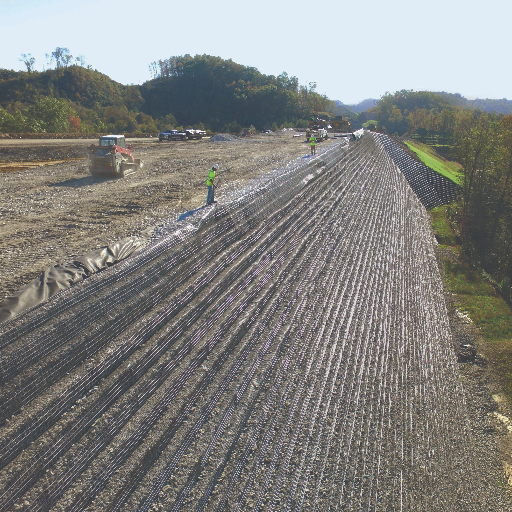
When it comes to designing for strength and stiffness, I tend to choose geosynthetic materials that provide the optimum tensile strength and rigidity when required to meet a certain project’s demand. This allows the retaining wall system to remain stable under loads, limiting large deformations, and carry on with effective performance throughout its lifespan.
Strength and Stiffness of Geosynthetic Reinforcement
To understand the strength and stiffness of the geosynthetic reinforcement systems, one must consider recent data and studies. Geosynthetics are defined by their high tensile strength, stiffness, and durability in different environments. One parameter is tensile strength, generally expressed in terms of kiloNewtons over meters (kN/m). High-strength geosynthetics that are usually used for retaining wall applications may offer tensile strengths beyond 100 kN/m depending on the type of material such as polyester (PET) or polyvinyl alcohol (PVA).
Stiffness is also relevant in limiting deformation. Studies have shown that geosynthetics with high tensile modulus values (kN/m/percent strain) exclude more strain and the resultant deformation from their structure. For example, materials having tensile modulus beyond 500 kN/m are well recognized by civil engineers as suitable for very demanding applications such as reinforcement of bridge abutments and highways.
Environmental durability is equally important. Geosynthetics are to function well under rigorous conditions, including but not limited to UV radiation, temperature variation, and chemical interactions in soils. Modern polymer technologies have, for instance, given place to geosynthetic products capable of retaining well over 80% of their original tensile strength after being placed in service for at least ten decades.
The results emphasize the importance of choosing an appropriate geosynthetic material meant for the particular requirements of a project, by considering tensile strength and stiffness as the key design parameters.
Analyzing Deformations in Reinforced Structures
Deformations in reinforced structures are among the key factors concerning safety and durability of engineering projects. Modern views emphasize that the behavior of geosynthetic-reinforced systems in various loading conditions is controlled by factors such as material selection, installation methods, and environmental conditions.In recent times, it has been demonstrated that geosynthetic materials can significantly reduce deformations if these are correctly applied. Considerably using biaxial geogrids in road reinforcement projects has reduced rutting deformations by more than 50%, hence improving pavement life.
In addition, from a numerical modeling side, finite element analysis (FEA) has matured to allow reasonably accurate predictions of deformation in reinforced structures under complex loading conditions. Research indicates that the use of geosynthetics, especially in soft soil conditions, diminishes vertical settlements by 30%-40% through load redistribution to better support structures.
Further studies have revealed that geo-synthetically reinforced retaining walls can support larger lateral loads with minimum displacements. For example, walls constructed using high-strength geotextiles can confine the horizontal deformation to below 1.5% of wall height during extreme loading events, which emphasizes the need for proper design techniques to be coupled with advanced materials for optimal performance outcome.
Comparative Analysis with Traditional Methods
Geosynthetic-reinforced retaining walls outperform traditional methods by excelling in strength, deformation control, cost-efficiency, durability, and environmental impact.
| Parameter | Geosynthetic | Traditional |
|---|---|---|
| Strength | High | Moderate |
| Deformation | Minimal | Noticeable |
| Cost | Low | High |
| Durability | Long-lasting | Varies |
| Eco Impact | Low | High |
Recent Advances in Geosynthetic Technology
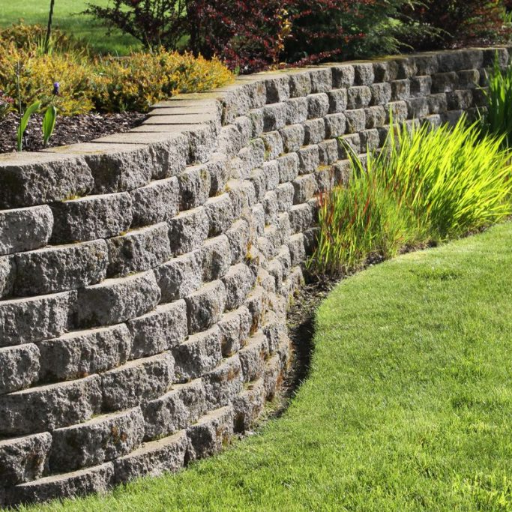
I regard SSI walls to be better than traditional retaining wall systems for their higher strength, superior deformation control, less cost, more durability, and less environmental impact.
Innovations in Geogrid Products
The newest innovations in geogrid technologies attempt to create products that perform better, are more sustainable, and are cheaper to manufacture. Modern geogrid materials are now prepared by using HDPE and PP, which endow the materials with tensile strength and enhanced resistance to chemical and environmental action. These materials can therefore carry higher loads while retaining flexibility required in various applications ranging from retaining walls, road works to railway infrastructure.
Available research data reveals that geogrid-reinforced retaining walls lower the total construction cost by as much as 30% as compared with conventional concrete walls. The benefits in terms of durability appear to be no less than potential, with most walls being more than 50 years old in several areas even under harsh environmental conditions. The environmental benefits are, of course, also worth mentioning, as geogrids reduce a great deal of the need for raw materials such as cement and steel. This results in a reduction of 40-50% in carbon emissions during the construction projects. Hence, geogrids stand as a much more sustainable solution for infrastructure building needs.
Another feature of the new type of geogrids is the use of complex patterns and mesh structures to distribute stresses more evenly through the soil. This innovation helps keep structures stable and reduces soil deformations by roughly 20% when compared to older geogrids. These improvements, in turn, enable infrastructures to perform well for longer periods and enhance engineering solutions to become inherently safer and more reliable.
Composite Materials and Their Advantages
Composite materials, comprising two or more fundamentally different components, are generally applied for superior performance and longevity. Generally, these materials consist of a matrix (for example, resins) combined with reinforcement (for example, fibers), providing excellent strength-to-weight ratios, corrosion resistance, and design flexibility. Recent research has shown that the use of composite materials for a structure can reduce its weight by as much as 30-50% in comparison to conventional materials such as steel and aluminum, while also maintaining high levels of strength.
One of the most prominent innovations in this field is the use of carbon fiber-reinforced polymers (CFRPs), which have found applications in industries ranging from aerospace to automotive. For example, in the aerospace sector, it is indicated in industry reports that using CFRPs for making aircraft provides a 20% saving in fuel consumption, mainly due to the reduced weight of aircraft components.
Also, in recent times, recyclable composites are being developed and studied in line with sustainability goals. Thermoplastic composites have gained considerable interest due to their ability to be reshaped and reused, potentially cutting waste by almost 40% over a product’s life cycle. These benefits make composite materials an important focus for sustainable and efficient engineering solutions.
Future Trends in Applications of Geosynthetics
Numerous innovations and huge demand for sustainable infrastructure solutions are fueling rapid developments in the field of geosynthetics. The current market studies report projected growth of the global geosynthetics market at a CAGR of 6.2% from 2023 to 2030, estimating the value will exceed $20 billion by the close of the decade. This uptrend is being driven by increasing applications of geosynthetics in construction, mining, and environmental conservation.
Eco-friendly and bio-based geosynthetics are fast emerging as a worthy alternative to lessen the conventional materials’ environmental impact. These are ideally employed for landfills, erosion control, and water management systems, where ecological concerns are placed on top of waste minimization. For instance, geosynthetic clay liners (GCLs) are increasingly getting fame for having a better impermeability and are a more economical option than compacted clay.
Other innovations are smart geosynthetics, which can collect environmental data, detect structural flaws, and provide real-time information on maintenance procedures and safety standards improvements.
There is also growing emphasis on durable and adaptable advanced geosynthetic materials that can perform even in harsh climate conditions over long periods. Research indicates that today’s geosynthetics can reduce the use of construction materials by about 30%, resulting in cheaper and sustainable infrastructure developments.
Such innovations lead to the future perspectives of geosynthetics in solving current pressing issues like climate resilience, urbanization, and conservation of resources. Once innovation continues, geosynthetics surely will have a monumental contribution to the future of civil and environmental engineering.
Reference sources
1. “Use of geosynthetic materials as soil reinforcement: an alternative eco-friendly construction material” (Chatrabhuj & Meshram, 2024)
This paper provides a broad overview of geosynthetic applications in construction, with a specific focus on soil reinforcement. It highlights the cost-effectiveness and environmental benefits, making it a good starting point for understanding the general feasibility and advantages of this approach. The extensive reference list further supports the reliability of the information presented.
2. “Assessing Numerical Simulation Methods for Reinforcement–Soil/Block Interactions in Geosynthetic-Reinforced Soil Structures” (Zhao et al., 2024)
This research paper delves into the specifics of numerical modeling techniques used to analyze geosynthetic-reinforced soil structures. The comparison of different simulation methods and validation against laboratory tests provides strong evidence of the feasibility of using numerical modeling to predict the performance of these structures. This is crucial for design and planning purposes.
3. “The Performance of Geosynthetic Reinforcement Road Pavement Over Expansive Soil Subgrade” (Hairulla et al., 2024)
This study directly addresses the use of geosynthetic reinforcement in a specific application—road pavements over expansive soil. The experimental approach, involving multiple test concepts and the use of sensors to monitor swelling potential and pressure, provides empirical evidence supporting the feasibility and effectiveness of geosynthetic reinforcement in this challenging context. The detailed methodology and results make this a strong validation source.
Frequently Asked Questions (FAQs)
What good can geosynthetics do in geotechnical engineering?
Geosynthetic reinforcements offer numerous advantages in geotechnical engineering, such as improving soil stability, better load distribution, or greater resistance to deformation. They help in confining the soil mass and in reinforcing the structures, which in turn can save costs as well as in a more productive use of materials and resources in construction.
How do geogrid products provide additional stability to reinforced soil structures?
The distribution of tensile forces within the soil mass is the way by which geogrid products enhance the stability of reinforced soil structures. Due to their aperture design, they are especially suited to interact with granular soil, thus improving strength and deformation characteristics of reinforced soil.
What is the purpose of geosynthetics in road construction?
Geosynthetics are used in road construction to provide reinforcement, drainage, and erosion control. They provide stabilization to the foundation soil and the backfill soil so that the road structure can accept the various loads and environmental conditions imposed upon it.
What are usually the different types of geosynthetics used in civil engineering?
The major types of geosynthetics used in civil engineering include geogrids, geotextiles, geomembranes, and geonets. Each has its own uses, such as reinforcement, filtration, or drainage purposes, thus characterizing their importance for various geotechnical applications.
How does spacing of reinforcement impact the performance of geosynthetically reinforced soil?
Reinforcement spacing is of great importance in performance of geosynthetically reinforced soil. The spacing, if correct, asks for reinforcement layers that effectively interact with the soils, adequately support, and do not excessively deform within load. Optimum spacing of reinforcement shall be made for seeking the strength and stability desired.
Which tests are conducted in the laboratory for the evaluation of geosynthetic reinforcement products?
Testing performed in laboratories for geosynthetic reinforcement products is of various types, including tensile testing, pullout testing, and durability testing. These tests aim to ascertain the long-term strength of the material, the strength of the connection, and the general efficacy of geosynthetics for different soil conditions.
What are the fields in which geosynthetics are applied in geotechnical engineering?
Geosynthetics find applications in a variety of geotechnical fields, including earth retaining structures, soil reinforcement walls, and embankment stabilization. Other uses include draining and landfill liners, accounted as far as various improvements are undertaken concerning soil behavior and structural integrity.
In what way do the characteristics of geosynthetics affect their performance?
These characteristics of a geosynthetic, including material type, tensile strength, aperture size, etc., affect its performance in soil reinforcement. A proper understanding of these characteristics enables engineers to select the most suitable geosynthetic products for a given application and thereby ensure the optimum reinforcement and stability.

